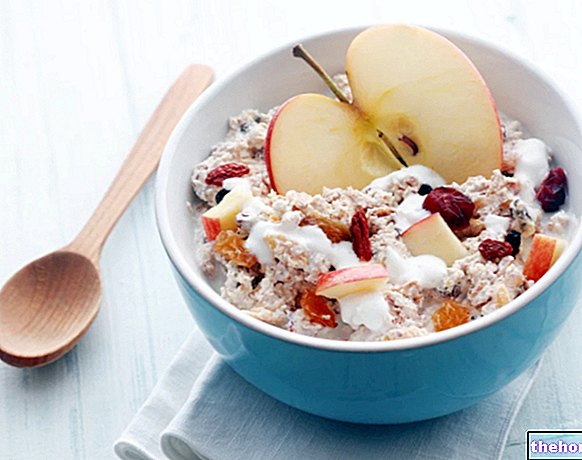The recommended daily requirement for these amino acids is:
- 40 mg / kg / day for valine;
- 23 mg / kg / day for isoleucine;
- 20 mg / kg / day for leucine.
In total, about 80 mg / kg / day, equal to about 6 g / day (2: 1: 1 ratio) in a 70 kg subject.
In meat, about 20% of the protein is made up of BCAAs (there are about 4g of BCAAs per 100g).
It is not proven that in the athlete they help to synthesize more muscle mass.
Before the effort they can be useful, second Newsholme, to counteract the entry of tryptophan into the cerebrospinal fluid, therefore to reduce the synthesis of serotonin and the consequent feeling of fatigue.
They can also act as blood swabs.
After exertion they can promote recovery.
They can turn into glutamine and reduce the risk of infections.
However, branched chain amino acids are widely present in the proteins of common foods (see table), which, therefore, if consumed in the right quantities, are able to completely cover the albeit increased daily nutritional needs of athletes.
The indication of the 2: 1: 1 ratio between leucine, isoleucine and valine can be motivated by the attempt to enforce, in dietetic products containing BCAAs, the ratio with which the three amino acids are present, in principle, in most part of the food.
This means that, for example, in 100 g of raw ham there are about 5.5 g of BCAAs, without looking for them elsewhere (eg: in supplements); the only drawback is that 100 g of ham also contains fat etc., so it is advisable to refer to it in cases where you also want to have a post-workout snack: in this case it is ideal.
FOOD
PROTEIN (g)
VALINE (mg)
ISOLEUCINE (mg)
LEUCINE (mg)
Rusks
11,3
540
427
830
Bread type 00
8,6
375
337
621
Semolina pasta
10,9
544
455
834
Dried chickpeas
20,9
966
892
1609
Dried beans
23,6
1085
990
1799
Fresh peas
5,5
226
201
342
Bovine
19,0
1018
933
1566
Veal
19,0
1018
933
1566
Pig
21,3
1218
1139
1741
Chicken breast
23,3
1384
1153
1955
Bresaola
32,0
1687
1608
2651
Dried ham
26,9
1416
1392
2234
Liver
20,0
1292
1070
1886
Cod
17,0
910
816
1484
Mackerel
17,0
1357
957
1636
Sole
16,9
903
817
1336
Tuna oil
25,2
1392
1198
2029
Trout
14,7
784
666
1028
Caciotta
21,1
1140
920
1720
Growth
16,1
820
630
1250
Mozzarella cheese
18,7
1360
1280
2880
Parmesan
33,5
1800
1421
2450
Sheep ricotta
9,5
575
484
1021
Yogurt inter
3,8
210
160
300
Whole egg
12,4
823
657
1041
Royal jelly
10,0
390
500
770
From the National Institute of Nutrition, Food Composition Tables. December 1997
naturally present in the human organism, whose main biological role is to supply energy to the muscles in the form of ATP.
The human being loses about 2 g / day of creatine, but can only synthesize 1 g / day; the rest must be taken with meat.
Meats contain about 4.5 g of creatine per kg.
Maximum human muscle concentrations are also around 4 g / kg.
Creatine taken by mouth enters the blood and from there goes into the muscle.
Creatine and its functions
In the muscle, there is mainly phosphocreatine, which transfers the highly energetic phosphate to the ADP and transforms it into ATP (alactacid energy mechanism)
Aerobic ATP is formed in the mitochondrion which, however, cannot get out; then it gives up its phosphate to creatine which becomes phosphocreatine and brings out the highly energetic phosphate.
Creatine is also an H + buffer.
How Much Creatine Do You Need?
The intake of creatine can only be used by those who are lacking in muscle (ie about 120-130 g total for those who weigh 70 kg).
For the others, rather small quantities are enough, equal to about 2-3 g / day.
Creatine has no toxic effect in the dosages used routinely.




























